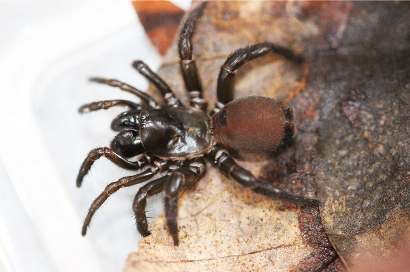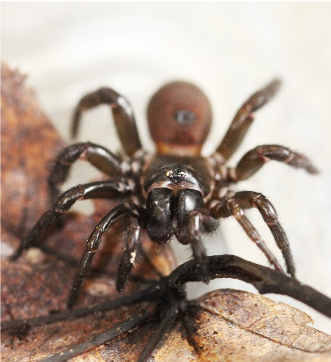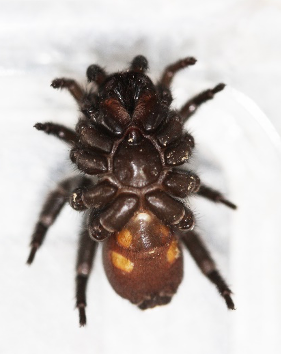
On March 6th, CMNH herpetologist Dr. Danny Hughes came across a very cool spider at Powdermill while digging holes for a salamander survey, and graciously captured it for us. We were excited to find out that it was a folding-door spider in the family Antrodiaetidae and genus Antrodiaetus! It is related to tarantulas and belongs to the same group of primitive spiders called mygalomorphs. They are uncommonly encountered, partly because they spend most of their lives in underground, silk-lined burrows. The entrance to the burrow is camouflaged with debris so that when unsuspecting prey walk by, the spider can just reach up and out of the opening, grab its meal, and retreat (see this YouTube video for an example: https://www.youtube.com/watch?v=k5owIY63g3E).


While the large fangs of these spiders may seem intimidating, they are not aggressive and are not of medical concern to humans because their venom is not very potent. In the ventral image, note the two pairs of yellow patches on the underside of the abdomen. These are respiratory structures known as book lungs. Nearly all spiders have a pair of book lungs, but only the primitive groups have two pairs.
Most folks are familiar with tarantulas which are found more in warmer climates, but these lesser-known mygalomorphs can be found right here in western PA. In fact, Powdermill is home to another family of mygalomorphs, the purseweb spiders (in the family Atypidae) which look similar, but they build silken tubes that run up along the base of a tree or rock above ground. We will be keeping our eyes peeled for this other cool family of spiders so we can photograph and show them off in another post. Stay tuned!
Andrea Kautz is a Research Entomologist at Carnegie Museum of Natural History’s Powdermill Nature Reserve. Museum employees are encouraged to blog about their unique experiences and knowledge gained from working at the museum.
